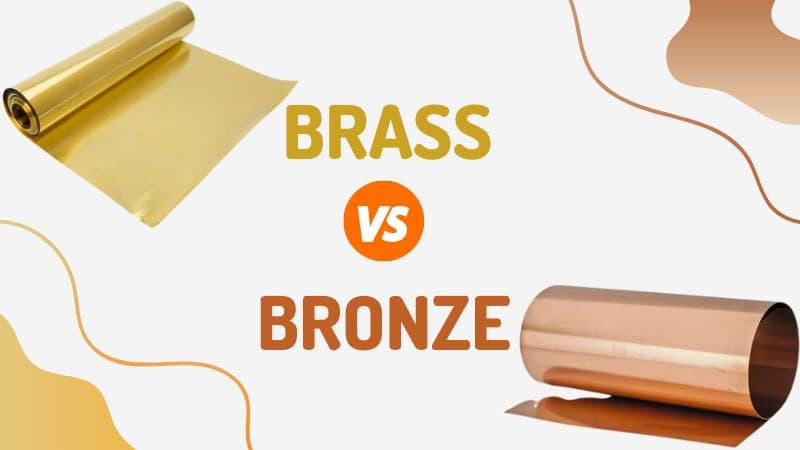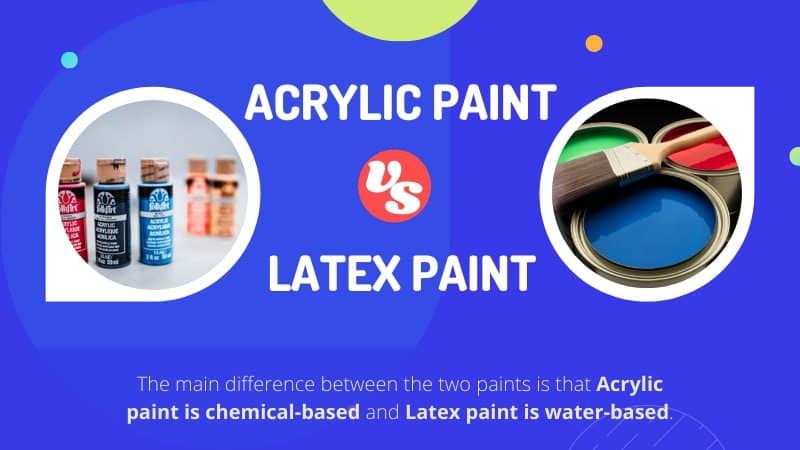
Brass and bronze are metal types that are commonly utilized in essential everyday items. While brass is a copper-zinc alloy, bronze is a copper-based alloy that is typically mixed with tin but can also contain other materials. These are old metals utilized by the Greeks and other ancient civilizations for centuries.
Due to their unique reddish tint, both metals are considered red metals. Many other combinations began with these metals. These two alloys also have a variety of applications due to their characteristics. Similarly, although bronze and brass items are drastically different not only in appearance but also in function, they were elevated in the same category.
Metal alloys like bronze and brass are generally utilized in the industrial sector. Many individuals assume they are identical and frequently mix them up. Even when they are both made of copper and are relatively similar, both include some significant distinctions. Bronze and brass will be discussed in terms of their structural, chemical, and mechanical qualities, and how they are being relevant and realistic.
Although there are some similarities between brass and bronze, the following article concentrates on their unique traits, attributes, as well as differences.
What is Bronze?
Bronze is a copper-based metal alloy with minor metal additions. Tin is the most common element used, however, phosphorus, manganese, aluminum, and silicon are also used to give the alloy diverse qualities. Bronze was first used by the Sumerians in around 3500 BC, the beginning of the Bronze Age.
Individuals were capable of constructing more sophisticated metal artworks and materials (artistic flooring), as well as a wider set of resources, military equipment, and armors with it. Bronze was a far more powerful and long-lasting material than concrete or copper.
Various component ratios can be used to better bronze qualities and features. Manganese, silicon, nickel, lead, zinc, and a variety of other metals are examples. As a result, developers have a wide range of bronze grades to choose from. Bronze is a metal with a reddish-brown/gold tint that is fragile but not so much as cast iron. It has a density of around 8.8 g/cm3 and a low friction coefficient when in direct contact with other metals.
The proportion of tin may affect the melting point. It transmits heat or electricity well, with a melting point ranging from 950 to 1050 degrees celsius, based on the volume of tin included.
Types of Bronze
- Silicon Bronze
- Phosphor Bronze
- Aluminum Bronze
- Manganese Bronze
- Bearing Bronze
- Copper-Nickel
Check out the Comparison Table
What is Brass?
Brass is a copper-zinc alloy. Other elements, including iron, aluminum, silicon, and manganese, are put in as well to generate unique characteristics and colors. There about 500 BC, brass was first introduced.
Brass has a variety of electro-mechanical qualities because of its structural properties. Zinc content, for example, increases the strength and ductility of the primary copper or aluminum in brass. More zinc makes it harder and ductile, as well as gives it a yellowish hue rather than a reddish hue.
Based on the zinc-to-copper ratio, brass comes in several colors, including vibrant gold, silver, and a variety of others. When compared to zinc, it is more durable and has relatively low friction when combined with other elements. It also has a low melting temperature of 900 - 1000 °C, based on the alloy, and a weight of roughly 8.73 g/cm3. Brass is extensively used in water fittings, mechanical parts, and musical equipment with high durability and machinability.
Along with its dazzling gold color, it is frequently used as a decorative item. Brass is essentially an alloy that is useful as a substitute since electrons from any two substitutes can start replacing each other, in just the same way.
Types of Brass
The following are the several types of brass:
- Alpha brasses (>65% copper)
- Alpha-beta brasses (55-65% copper)
- Beta brasses (50-55% copper)
- Gamma brasses (33-39% copper)
- White brasses (<50% copper)
Key Differences Between Bronze and Brass
The key differences between bronze and brass are listed below -
Comparison Table
|
Main Point |
Bronze |
Brass |
|
Composition |
Consisting primarily of copper & tin and other elements such as phosphorus, manganese, aluminum, or silicon. |
An alloy of copper and zinc. |
|
History |
Around 3500 BC |
First known to exist in about 500 BC. |
|
Color |
Reddish-brown |
Muted yellow, similar to gold, but duller. |
|
Popularity |
Bronze is known for its strength |
Brass is known for its strength and ductility (higher malleability) |
|
Malleability |
Greater malleability |
Harder, more brittle |
|
Uses |
Suitable for some decorative applications (e.g., sculptures, musical instruments, etc.) |
More suited for decorative applications (mainly due to its gold color) |
|
Melting point |
315–1080 °C |
809–1030 °C |
Let’s elaborate on some of the major differences between these metals -
- Composition: Bronze is composed of approximately 88 percent copper and 12 percent tin. Additional components like aluminum, manganese, nickel, or zinc can also be added or subtracted from either component, whereas Brass is a copper-zinc alloy. Other materials, including arsenic, lead, and aluminum, are often applied to enhance workability, chemical resistance, and mechanical qualities.
- Properties: Bronze's biggest distinguishing feature is its salmon-like red color and tone. It's a shade darker but less red in color than copper, and it's noticeably duller than genuine brass. Brass is a gleaming yellow-gold alloy that is pretty sophisticated and frequently utilized in decorative applications.
- Applications: Bronze alloys currently are very flexible. Molds, steels, and castings made from them are used extensively in architects, agribusiness, and marine engineering. On the other hand, Brass is used in doorknobs, lights, and ceiling fixtures, among other things. It's also used to make most traditional brass instruments. This is also the starting point for a variety of piping systems, screws, and connectors. Brass is also used to make containers for all types of ammunition.
- Melting point: Bronze has a greater melting point (315–1080 °C) than brass (809–1030 °C), and both may be manufactured readily. There is a change from a hard to a molten solution when the component hits its melting point. These alloys can be simply brushed into various shapes during that point.
- Weight: When analyzing the weights of bronze and brass, freshwater can be used as a reference point for specific gravity comparisons. Brass has a lighter weight due to its metal content, ranging from 8400 to 8730 kg/cu.m.
- Durability: Bronze is a tough and durable metal that can't be readily elevated. Bronze can survive water, making it impervious to water-related erosion. Brass, on the other hand, is strong but not as long-lasting as bronze. It is, therefore, resistant to corrosion and cracking, making it a rather long-lasting material.
- Price: The amount of copper in a combination of bronze and copper can depend on various factors. Both alloys' market prices are determined by the amount of copper in them. Bronze is typically more costly than brass. This can be due to its copper content as well as the bronze-making technology.
Practical Example
Maria is looking for interior designers for her newly bought house. She wants to design her own house with a luxurious finish in an affordable range. Since she doesn't have much knowledge about designing and its price, she decided to hire someone to do the interior design for her.
Now, she finally hired one and they wanted to know what she wanted the design to look like. She wants the cookware, furniture, and lighting to bring warmth and depth to a room, to warm up minimalist, neutral color schemes. As per her preference, the designer suggested using bronze as the popularity of copper and the rose gold color has put bronze at the forefront of interior design. Moreover, Bronze has warmer, reddish hues than brass, giving it that traditional and welcoming feel.
For kitchens and bathrooms, Maria wants to have a gold type finish but within an affordable budget. The designer suggested using brass as it adds luxury and opulence to any room, perfect for a high-end home or hotel. Brass will be perfect for kitchens and bathrooms, as it’s popular for taps and shower fittings. After all that discussion, Maria agreed with the designer and decided to make her house look just the way she visualized it.

